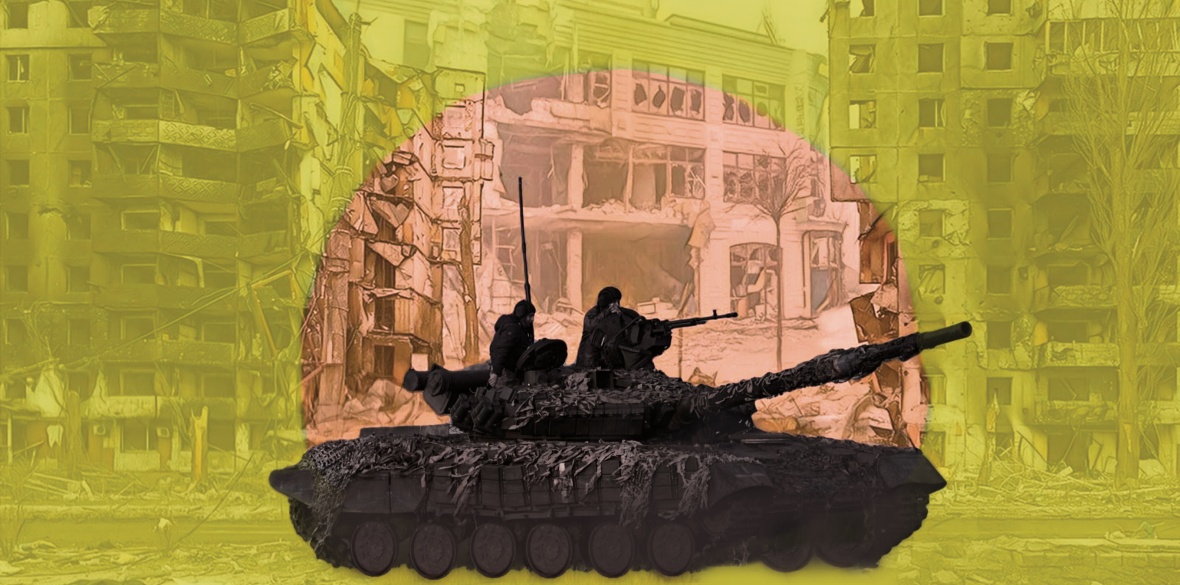This is the last article you can read this month
You can read more article this month
You can read more articles this month
Sorry your limit is up for this month
Reset on:
Please help support the Morning Star by subscribing here
IN a shocking development, the government has announced it will be sending depleted uranium (DU) rounds to Ukraine along with Challenger 2 tanks.
As we know from several wars in the past few decades, the health consequences for Ukrainian civilians will be high. DU is a chemically toxic and radioactive heavy metal and it’s a by-product of the enrichment process used to make reactor-grade uranium.
Its chemical and physical properties have made it popular for a range of military and commercial uses: its density and its ability to self-sharpen attracted the attention of the US Department of Defence (DoD) in the late 1950s. The military was looking to increase the armour-piercing capacity of munitions and to strengthen the armour of tanks.
DU seemed to fit the bill. But its use has had a devastating impact on the populations caught up in numerous conflicts, with the terrible type of health consequences that we associate with radiation impacts.
DU is used for armour-piercing tank rounds and bullets as it is so heavy, meaning it can easily penetrate steel. Because of its heaviness, DU has also been used as ballast in aeroplanes, notably in hundreds of Boeing 747s — the early jumbo jets — that were built before 1981.
The practice became particularly controversial after an El Al cargo jet crashed into an apartment block in Amsterdam in 1992. Forty-three people were killed and the cargo, which included 10 tons of chemicals, as well as flammable liquids, gases, and caustic substances, burst into flames, along with hundreds of kilos of DU carried as weighting.
Although residents were assured that no health risk was posed, it was apparent that much of the DU had been released as dust particles into the atmosphere.
The risk is not that DU munitions will cause a nuclear explosion. It’s that the impact of their use causes toxic or radioactive dust to be released and if this is subsequently inhaled or ingested in other ways, it has very significant negative health consequences.
After the first Gulf war, the DoD Office of the Special Assistant for Gulf war Illnesses (OSAGWI) identified several DU exposure scenarios including through wounds caused by DU fragments, inhalation of airborne DU particles, ingestion of DU residues, or wound contamination by DU residues.
DU munitions were used on a large scale by the US and Britain in the Gulf war in 1991 and in Iraq in 2003. Their use has caused a sharp increase in the incidence rates of some cancers, such as breast cancer and lymphoma, in the areas where it has been used.
It has also been implicated in a rise in birth defects from areas adjacent to the main Gulf war battlefields. Other health problems associated with DU include kidney failure, nervous system disorders, lung disease and reproductive problems.
A report funded by the Norwegian Ministry of Foreign Affairs in 2013 showed that more than 400 tonnes of DU ammunition were estimated to have been used in 1991 and 2003, the vast majority by US forces.
The report showed that the Iraqi government’s Radiation Protection Centre had identified between 300 and 365 contaminated sites by 2006, mostly in the Basra region in southern Iraq.
As well as warning of contamination being spread by poorly regulated scrap metal dealers, including children, it also shared evidence that DU munitions were fired at light vehicles, buildings and other civilian infrastructure including the Iraqi Ministry of Planning in Baghdad — despite official assurances of military-only armoured targets.
Its use in the former Yugoslavia by Nato forces in 1995 and 1999 led to the same type of consequences. It was also used by the US in Syria in 2015. The impacts have not been confined to local populations — they have also affected the troops involved in or close to their use, and also military clean-up teams sent to deal with the impact of the DU.
The severe health consequences have led to the terms “Gulf war syndrome” and “Balkan syndrome” entering our vocabulary. The Ministry of Defence disputes the risks of DU, yet it recommends “ongoing surveillance” for veterans with embedded DU fragments.
No treaty explicitly banning the use of DU is yet in force, but it is clear that its use runs counter to the basic rules and principles of international humanitarian law. In 2006, the European Parliament strengthened its previous calls for a moratorium by calling for an introduction of a total ban, classifying the use of DU, along with white phosphorus, as inhumane.
Since 2007, repeated UN general assembly resolutions have highlighted serious concerns over the use of DU weapons. Britain, together with the US, France and Israel, are the only states that have consistently voted against the resolutions.
The British government must put an immediate end to its use of DU — inflicting it on the people of Ukraine is the last thing they need.
Kate Hudson is general secretary of CND (cnduk.org).










